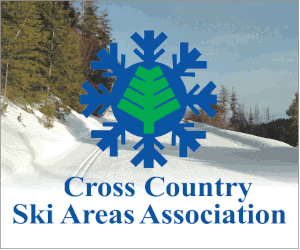July 18, 2021 - Here at the shop, we feel really lucky to be able to combine our job with our passions. One of the things we love about this job is that we get so close to the community. We meet a lot of people – World Cup athletes and recreational skiers, wax techs and equipment manufacturers – all passionate about skiing.

Over the years, we’ve seen many structures and grinds on the various new and used skis that have come through the shop. And it fascinates us how much of a difference just a small adjustment can make for all levels of skiers.
But what are these grinds and why do they matter?
Everyone will benefit from the right grind. It doesn’t matter what kind of ski or wax you have if the grind isn’t right for the snow and conditions.
At the World Cup Elite level, wax techs have to be meticulous. They are operating with margins that are in the fractions of one-thousands, where just a hair too much or too little of the grind patterns separates the medalists from the remainder of the field.
More than just a pattern, the research and science behind grinding are probably the most important things to have happened in this industry since we opened our shop doors more than 25 years ago.
Grinds are designed to make skis glide better in various conditions. There are different grinds for different temperatures and conditions, such as warm conditions and cold conditions, new snow, old snow, transformed snow and man-made snow, wet snow and dry snow, and any combination of these.
But while the World Cup skiers have a large selection of skis and grinds to cover all of these conditions, most recreational skiers do not have such impressive resources. That’s why we suggest that most of our customers go general rather than specific. There are grinds that cover a wider range of conditions, such as a more universal warm grind or a universal cold grind, depending on your region.
A universal cold grind is one of the most versatile grinds on the market. And it is the one we suggest here at the shop in Edmonton, Alta. It covers a wide temperature range and will work on a variety of snow types, from quite cold and dry to quite warm. Additionally, the universal cold grind is a grind that takes well to a manual rill on top of the basic grind, so this is one we recommend as a good, all-round grind.
For older skis that have seen a trail or two, stone-grinding removes base material in a uniform, controlled manner, resulting in fresh P-Tex being exposed. This fresh P-Tex will absorb wax better and provide the foundation for the application of a new structure or it can be geared to a specific condition that you experience in your area.
When purchasing a new ski from your local shop, off the rack each of the manufacturers provides a universal grind that you can feel confident about when hitting the trail with speed.
Typically, the grind that comes with a new ski is pretty good for the needs of most skiers, but most athletes at the top level will have new additions to their fleet re-ground to suit their needs and to match the skis’ characteristics.
That said, the new grinds have improved tremendously over the years, so it’s hard to tell for certain how they will perform in your local conditions without skiing on them on your local trails.
In general, many of the store skis have larger grinds than what we prefer here in Edmonton with the cold and dry conditions that are typical of Alberta.
Over time, once you work with your skis and develop a feel for the conditions they work best in (factoring in air humidity and snow type in your area), you can then work with grind options that match the flex and characteristics of your skis.
This may take some time – trusting your judgment in terms of ski feel. However, if you keep an open mind and leave bias on the table in terms of brand and age of the ski, you can do what the wax techs of the world do for each and every athlete: spend time, take notes and develop an optimal fleet of skis.
Welcome to mindful skiing and have a great season.






